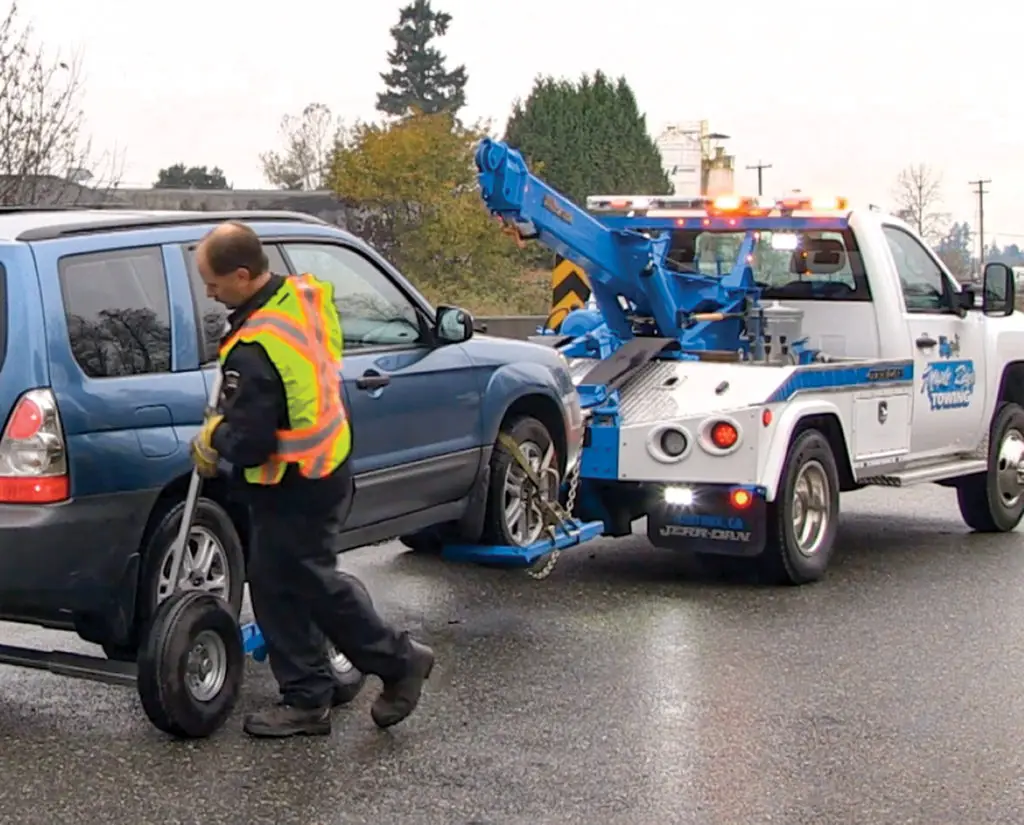As with all safety when it comes to towing and recovering, dolly safety begins with proper training.

Courtesy of the Automotive Retailers Association (ARA)
There are two major manufacturers of dollies in North America: Collins and In The Ditch. Each manufacturer prescribes their own procedures, which can be found on their websites. But regardless of which dolly you use, safety is your primary consideration.
Failure to lift properly can lead to back injury or other strains. Failure to keep your hands and feet clear of moving parts could result in injury, and watch for pinch points or adjustment holes. Careless operation of the lifting bar could also result in injury.
First and foremost, do not operate a tow dolly (or any other equipment) without appropriate training. Only after you have been shown how and are able to demonstrate correct operation to a skilled supervisor should you set out on the job.
When you are ready to hit the road, always conduct a pre-shift inspection of all components to check for the condition of tires, cracks or flaking paint, deformation of plates, welds, or break-over-bar, fraying or deterioration of tie-downs, and loose rivets or missing end-caps. Report any deficiencies to a supervisor and discontinue use of the equipment immediately. Failure to check for problems or incorrect usage of dollies not only puts tow operator safety at risk, it also risks the safety of the motoring public if the dolly malfunctions during a tow.
“Once you arrive on scene, assess the work environment and ensure that suitable safety and traffic control measures are in place before commencing work.”
Once you arrive on scene, assess the work environment and ensure that suitable safety and traffic control measures are in place before commencing work. Evaluate the vehicle you will be towing and stay within the manufactured rating of the dolly (maximum tire load x the number of tires = capacity). If the environment you are working in has limited space (such as a wall located close to the vehicle) follow the manufacturer’s directions on how to safely move the vehicle away from obstruction before loading.
When you are ready to lift the vehicle onto the dolly, remember to use safe lifting practices:
- Size up the dolly components—make a good estimate of the weight of an object, how the weight is distributed, the condition of the object, and any handholds.
- Place your body close to the dolly components—operators should keep their feet close to the components and centre themselves before lifting.
- Keep your back in a neutral and straight alignment whenever possible; avoid twists, turns and jerking motions.
- Maintain a good grip when using the break-over-bar; ensure that your head or body is never in a position where it could be struck by the break-over-bar.
- Use extra caution when working on uneven pavement, loose gravel, snow, water, or ice.
After the vehicle is safely loaded, use suitable wheel straps as directed by the manufacturer. Remember, it is not worth rushing if you are skipping steps and endangering yourself. Your number one job should always be getting home safe.
For more information on how you can be safe on the job check the ARA’s OHS Responsibilities and Industry Supported Safe Work Practices for the Towing and Recovery Industry Manual.
